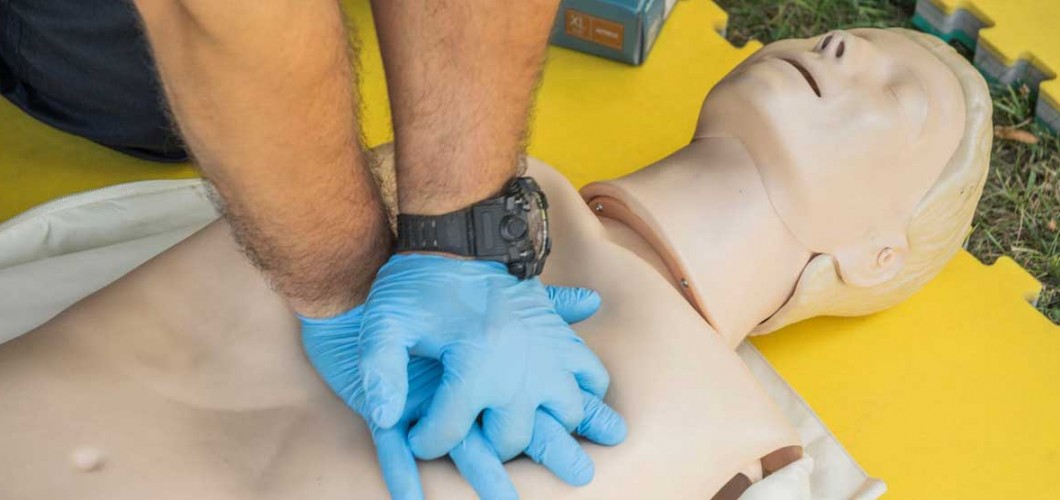
How to Perform Chest Compressions? Basic CPR Techniques
Reading Time: 15 minutes
One of the life-saving first aid techniques, chest compressions (CPR), is a critical procedure that increases the chances of survival in cases of cardiac arrest. Timely and proper intervention during cardiac arrest can significantly impact survival rates. Knowing the basic techniques of Cardiopulmonary Resuscitation (CPR) is an essential skill in saving someone's life. In this blog post, we will discuss when CPR should be performed, the steps of chest compressions, and the essential CPR techniques.
1. What is CPR (Chest Compressions)?
CPR, or chest compressions, is a first aid procedure performed to ensure the circulation of blood throughout the body when the heart stops beating. CPR consists of chest compressions and artificial respiration. When the heart stops, performing chest compressions becomes crucial to continue supplying oxygenated blood to the organs, including the brain. While CPR does not restart the heart, it ensures that blood continues to circulate, which can make a difference in survival chances.
2. When Should CPR Be Performed?
CPR should be performed when a person is experiencing cardiac arrest. Signs that the heart has stopped beating include:
- Loss of pulse: If you cannot detect a pulse or it is irregular, cardiac arrest may be suspected.
- Absence of breathing: If the person is not breathing, this could indicate cardiac arrest or airway obstruction.
- Loss of consciousness: If the person is unresponsive and not reacting, cardiac arrest might be occurring.
If any of these symptoms are observed, immediate intervention is required, and CPR should be performed.
3. Key Considerations When Performing CPR
When performing CPR, it is essential to follow the correct technique to avoid complications. Incorrect CPR may worsen the situation rather than help. Here are the key things to keep in mind while performing chest compressions:
- Place the person on a flat surface: Lay the person on their back on a hard surface to ensure effective chest compressions.
- Position your hands correctly: Place the palms of your hands on the center of the person's chest, on the sternum (breastbone). Keep your fingers together and your arms straight.
- Apply the correct amount of pressure: Push down firmly and quickly on the chest, ensuring a depth of about 5-6 cm for each compression.
- Maintain the correct compression rate: Perform chest compressions at a rate of 100-120 compressions per minute.
4. How to Perform CPR (Chest Compressions)? Step-by-Step Guide
Follow these steps to perform CPR and chest compressions correctly:
Step 1: Assess the Situation
Check the person's consciousness level. If the person is unresponsive and not breathing, call emergency services immediately (112). If you're alone, call for help and then proceed to perform CPR.
Step 2: Position the Chest
Place the person on their back on a hard surface. Position your hands at the center of their chest, on the sternum.
Step 3: Begin Chest Compressions
Start applying rapid, strong pressure on the chest. Each compression should be about 5-6 cm deep. Perform compressions at a rate of 100-120 per minute.
Step 4: Perform Rescue Breaths
After 30 chest compressions, give 2 rescue breaths. Tilt the person's head slightly back, pinch their nose, and give two full breaths into their mouth, ensuring that their chest rises.
Step 5: Continue CPR
Continue performing chest compressions and rescue breaths in a 30:2 ratio until emergency medical personnel arrive or the person begins to show signs of life.
5. Basic CPR Techniques
CPR Without Training:
- Hands-only CPR: If you're untrained or unsure about performing rescue breaths, perform hands-only CPR by providing chest compressions without artificial ventilation. This is still beneficial and can help maintain blood circulation.
CPR With Training:
- Combination of Chest Compressions and Rescue Breaths: If you are trained in CPR, perform chest compressions and rescue breaths together. This helps provide oxygen and keep blood circulating to vital organs during cardiac arrest.
6. Why is CPR Training Important?
CPR is a skill that requires proper technique to be effective. CPR training ensures that individuals perform the correct steps and use the proper pressure, preventing any harm. Participating in CPR training increases the likelihood of performing life-saving procedures in an emergency situation.
7. Conclusion: CPR Saves Lives
Chest compressions (CPR) is an essential life-saving procedure that increases the chances of survival during cardiac arrest. Performing CPR correctly ensures the continued circulation of oxygenated blood to vital organs. Learning CPR and being prepared for emergencies is crucial in saving lives.

Leave a Comment